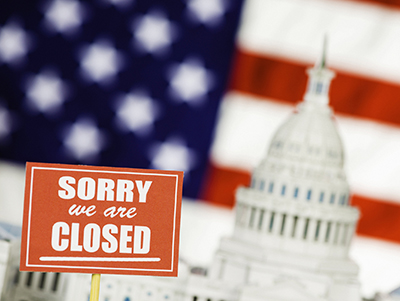 At the moment, no 2017 supplemental or 2018 appropriations bills have been enacted. The federal government has been operating on a series of short-term continuing resolutions. Political impasses over another continuing resolution threaten to again result in a “government shutdown.” For contractors and subcontractors working on federal contracts, the situation is uncertain and frustrating. But there are some steps that can be taken to ensure the contractor is in the best position in a bad situation.
At the moment, no 2017 supplemental or 2018 appropriations bills have been enacted. The federal government has been operating on a series of short-term continuing resolutions. Political impasses over another continuing resolution threaten to again result in a “government shutdown.” For contractors and subcontractors working on federal contracts, the situation is uncertain and frustrating. But there are some steps that can be taken to ensure the contractor is in the best position in a bad situation.
1. Inventory contracts and determine which are/are not supported with already appropriated funds
Identify federal contracts and subcontracts and determine whether tasks in performance are fully funded (e.g., multi-year or “no year” contracts), or, on the other hand, are subject to incremental funding, and “at risk” in a shutdown.
2. Communicate EARLY with Contracting Officers (or, in the case of subcontractors, the prime contractor) and ask for prompt written guidance and directions on what to do about work in progress, invoicing, impending delivery dates and expiration of periods of performance; thoroughly document all such communications
If the CO indicates a stop work order will be issued, request in writing instructions as to whether the contractor’s personnel will be required to remain “on standby” during the stoppage. Such instructions may affect the contractor’s ability to mitigate losses by reassigning such personnel to other unaffected work. Also ask the CO in writing if he or she is going to be furloughed, and from whom the contractor must take direction in that event.
3. Continue performance until receipt of a formal “stop work” order from the Contracting Officer; have personnel report ready for work at federal facilities unless and until formally denied access to the premises and document any denial of access
To the extent the government stops work or otherwise delays a contractor’s performance, a contractor may be able to receive a schedule adjustment and, in some circumstances, reimbursement or compensation. But, generally, unless and until a “stop work” order is issued the contractor must continue to perform unless prevented by the government.
4. Take reasonable steps to mitigate costs and delays arising from shutdown
These could include reassigning personnel as opposed to laying off or terminating them, working with vendors to defer purchases of supplies, and issuing stop work orders to subcontractors.
5. Separately account for and thoroughly document any costs and expenses incurred in responding to the shutdown, and resuming work once it is over
Establish separate accounting codes and charge costs and expenses associated with shutting down and resuming work to them. This will be very helpful in preparing requests for schedule adjustments, equitable adjustments, and claims for recovery of costs and expenses associated with the shutdown and resumption of work. In the event of a prolonged shutdown, it will also be helpful in claims arising from possible government deductive “descoping” change orders and/or partial or total terminations for convenience.
If you have any questions or need help or advice in dealing with your company’s particular situation, please contact John Knab or Ben Lambiotte in GSB’s Washington, D.C. office.
